The Israel-Hamas war has lasted for more than a month and has only recently shown signs of cooling down, with a temporary 4-day ceasefire starting on November 24. Before that, Israel launched a ground offensive, starting to concentrate its forces on Hamas's underground tunnel system, which is considered a "maze" despite the risks they face.
Hamas is believed to be holding hundreds of hostages in a network of tunnels hundreds of kilometers long, crisscrossing Gaza's underground. In order to achieve its declared goal of eliminating Hamas, Israel had no choice but to carry out underground operations.
This will be a tense battle and both sides are expected to deploy tactics to deal with the other side.
Hamas turns the Mediterranean into a "weapon"?
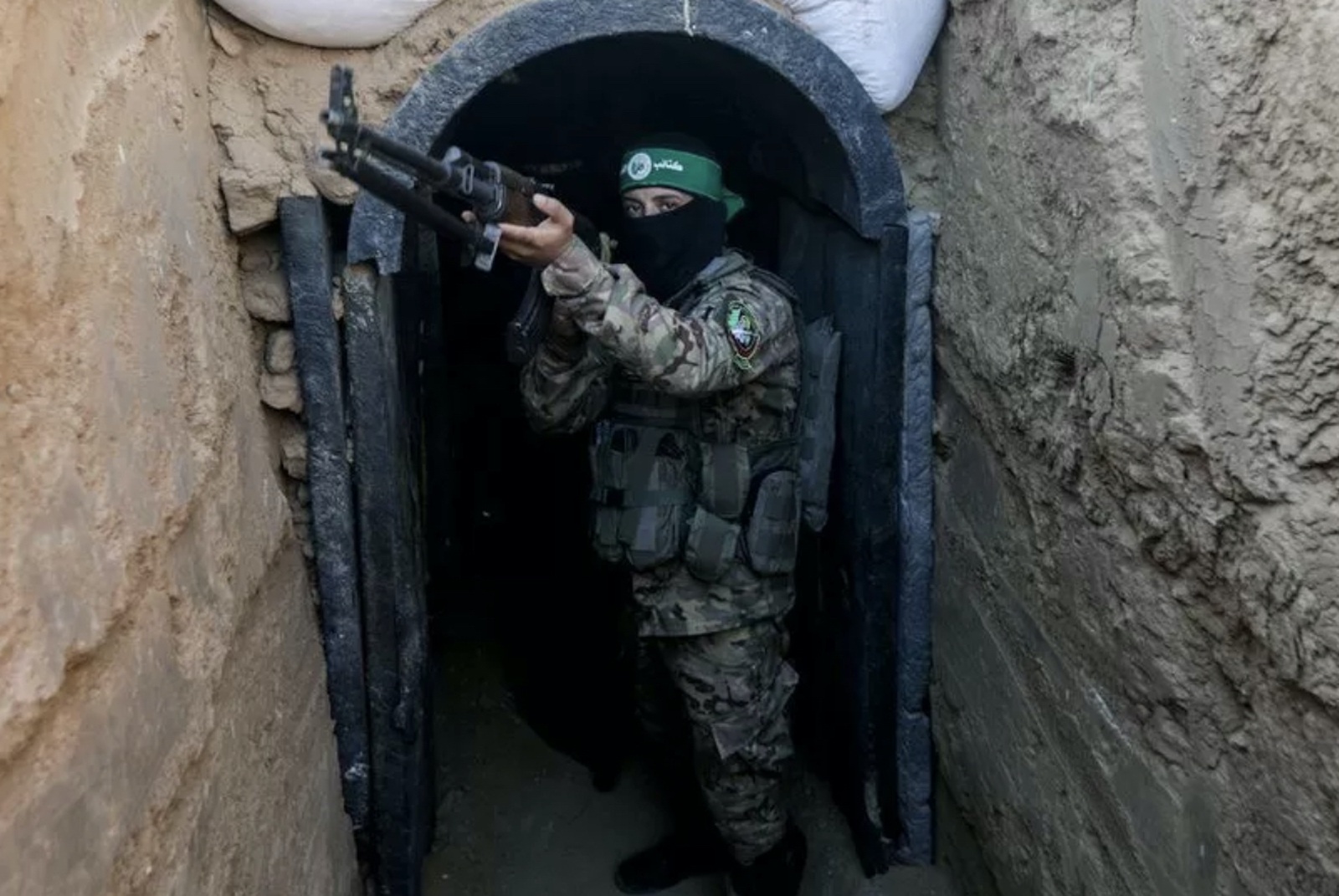
A Hamas member stands in front of an underground tunnel in Gaza (Photo: AFP).
According to Asia Times , Hamas may have thought of creating a trap with seawater and waiting for the right opportunity to attack when Israel was trying to neutralize the tunnel system.
Previously, observers have hypothesized that Hamas could use the tunnel system as a psychological warfare tactic to demoralize Israeli forces in Gaza. Hamas has long considered the tunnels a defensive measure in wartime. But this time, Hamas could turn the tunnels into offensive "weapons".
Specifically, one option proposed is that Hamas could create underground floods using Mediterranean water by remotely detonating a bomb on the coast.
Hamas' tunnels are quite deep and they may be connected to the Mediterranean coast. On the other hand, about 25% of Gaza is below sea level. Of the four areas in Gaza that are below sea level, three are in the north and center of Gaza. The remaining area is in the south.
According to Asia Times , if Israel goes deeper into the underground tunnels in Gaza, Hamas may let seawater flood through the tunnels and flood low-lying areas, creating a swamp belt of about 4km, making it almost impossible for Israeli vehicles and tanks to move.
Expert Robinder Sachdev commented that in the scenario where Hamas floods the tunnels themselves, they will have an advantage in the northern Gaza area, where Israel has been focusing its attacks recently.
Hamas tunnels are located at an average depth of 15 meters below ground level, Mr. Sachdev said. Hamas may have built tunnels as deep as 1-1.2 meters, then connected them to the Mediterranean Sea. At the appropriate time, Hamas could blow up the connection, causing seawater to flow through the tunnels and flood low-lying areas.
In the scenario where Israel decides to use US-made GBU-28 bombs to destroy underground bunkers, it will only make the flooding situation worse, directly affecting Tel Aviv's military vehicles on land.
Gaza's network of tunnels, most of them built in the past 40 years, gives Hamas the ability to attack Israel. It also constitutes the group's most formidable defense.
Open-source maps show that Hamas has at least 11 separate tunnel networks, some close to the sea. However, the actual number could be much larger, with Hamas claiming the total length of the tunnels is around 500km.
Flooding from the sea has been used as a deterrent strategy for centuries. For example, during the Siege of Leyden in 1574 during the Dutch War of Independence, the Dutch destroyed the dikes on the Maas River, which blocked the North Sea, flooding the countryside and forcing the Spanish to retreat.
Another example of the use of flooding was the destruction of the Yellow River dikes in 1938 during the Second Sino-Japanese War. By destroying the dikes, the Chinese prevented the Japanese from capturing Shaanxi, Sichuan, and Chongqing.
Will Israel use similar tactics?
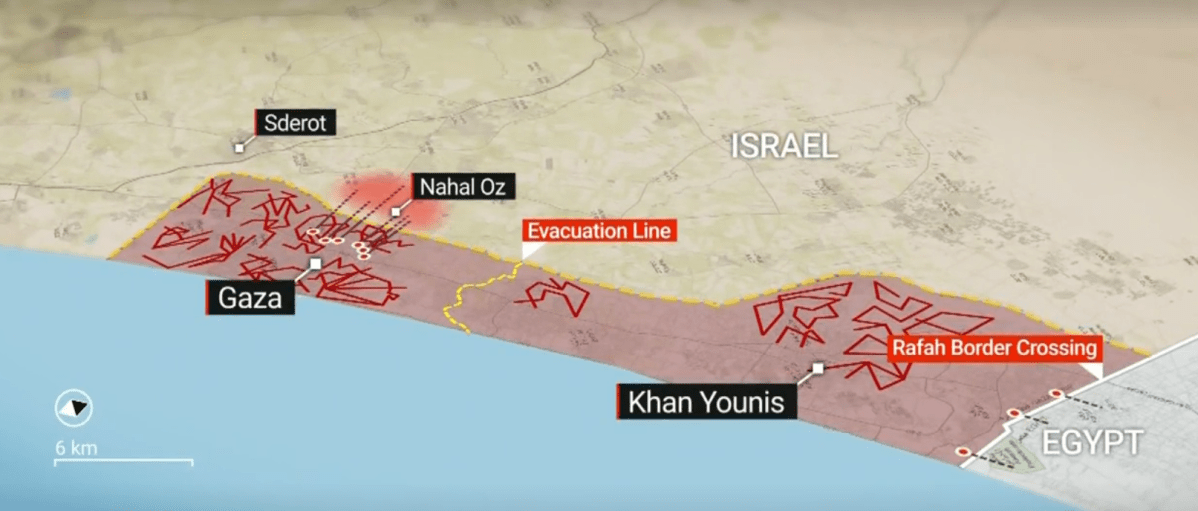
Simulation of some underground tunnels of Hamas (Photo: Global Times).
On the other hand, military expert Jeff Goodson said that Israel could also proactively flood Hamas tunnels to force enemy fighters to fight above ground by using a plumbing system that directly draws water from the sea and pumps it into the tunnel entrances.
Observers say this tactic could reduce casualties for Israel and is also the most long-term way to deal with Hamas' complex underground tunnel system.
Once tunnels are flooded, if Hamas wants to pump the water out of the tunnels, it will be very time-consuming and expensive, especially if Israel bombs them heavily above. Moreover, flooding tunnels can be done flexibly. Israel can immediately flood the tunnels that have been discovered and gradually flood the remaining tunnels.
It has been suggested that flooding the vast network of tunnels could take Israel a long time. A 500km tunnel “maze” is estimated to take seven and a half months to fill, pumping in 378 litres of water per minute.
However, technology now exists that allows water to be pumped at 10 times that rate. In addition, the tunnels will not need to be completely filled, some only need to be half-filled to be unusable.
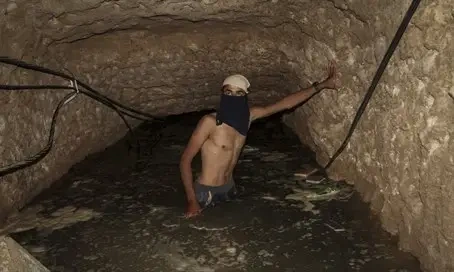
An underground tunnel in Gaza was previously flooded by Egypt to prevent weapons and opposition militants from moving into the Sinai Peninsula (Photo: Flash 90).
According to experts, since 2013, Egypt has flooded a series of cross-border tunnels in Gaza by releasing water into routes often used for smuggling.
Egypt's goal is to stop the flow of weapons and opposition militants from Gaza to the Sinai Peninsula. According to the Israel Hayom news site, through combined efforts, Egypt has destroyed up to 1,900 large and small Hamas tunnels, causing underground cross-border trade activities to stagnate for a long time.
At that time, Egypt bombed the tunnels above, planted explosives, and pumped sewage and seawater into the tunnels. Therefore, the option of pumping water to flood the tunnels was considered feasible for Israel, Asia Times commented.
According to expert Goodson, if Israel chooses to flood the tunnels, they will be able to neutralize Hamas's complex network for a long time, forcing the fighters to come out on the ground. From there, Tel Aviv can take advantage of weapons over the enemy, as well as reduce the risk of falling into Hamas's "trap" when operating underground.
Underground "trap"

Israeli soldiers move underground in Gaza (Photo: AP).
For years, Hamas has viewed the tunnels as a vital system that allows it to counter the overwhelming Israeli military.
The tunnels dug under Gaza were originally used to smuggle goods into and out of Egypt to circumvent Israel's total blockade of the strip.
Hamas members then continued to build tunnels to move rockets and rocket launchers, weapons, shield members from detection by the Israeli military and conduct attacks into Tel Aviv-controlled territory.
In an article for the Modern War Institute (USA), expert John Spencer said that Hamas could use underground tunnels to conduct surprise attacks, such as infiltrating areas behind Israeli positions to attack and cause damage to the enemy.
Hamas also uses tunnels to escape Israeli attacks, allowing members to move between fighting positions safely under large buildings, Mr. Spencer said.
According to this expert, moving into the tunnel creates a great tactical challenge for Israel when the fighting conditions are relatively harsh with poor visibility, thin oxygen, and difficulty using specialized equipment.
In familiar terrain, Hamas can gain a great advantage over the Israeli forces which are superior in numbers and weapons capabilities. In narrow streets, Israel's advantages in technology, military engineering and defense can hardly be effectively utilized.
Although Israel has developed unique tactics and equipment for tunnel warfare in Gaza, the depth and scale of these routes may exceed Tel Aviv's ability to effectively strike.
In addition, experts say the combination of urban and underground operations will pose major challenges for Israel as Hamas can still move silently underground, hiding important structures, weapons, and command bases.
To reach and eliminate Hamas, Israel may have to send commandos underground to search for targets and they may face the risk of great damage from enemy traps.
Therefore, the option of flooding the tunnel seems to have been calculated by Israel to minimize human losses, as well as effectively solve the underground "maze".
In an article on the Substack website, US investigative journalist Seymour Hersh said last month: "A source in the US administration said that the Israeli leadership appears to be considering flooding a large part of Hamas' underground tunnel system."
According to Asia Times, AP
Source


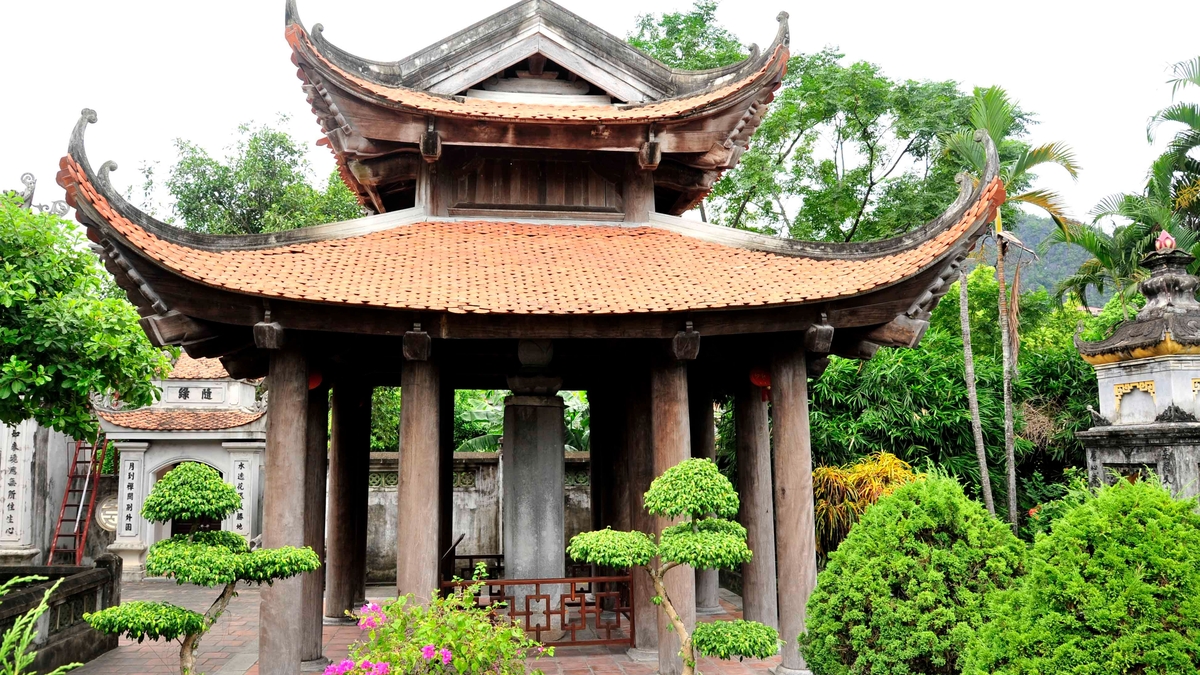

![[Photo] National Assembly Chairman Tran Thanh Man received a delegation of the Social Democratic Party of Germany](https://vphoto.vietnam.vn/thumb/1200x675/vietnam/resource/IMAGE/2025/10/28/1761652150406_ndo_br_cover-3345-jpg.webp)


![[Photo] Draft documents of the 14th Party Congress reach people at the Commune Cultural Post Offices](https://vphoto.vietnam.vn/thumb/1200x675/vietnam/resource/IMAGE/2025/10/28/1761642182616_du-thao-tai-tinh-hung-yen-4070-5235-jpg.webp)





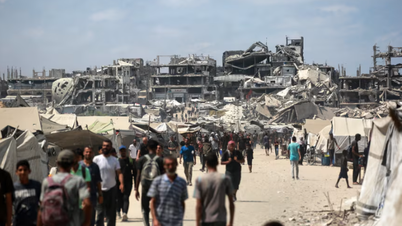
















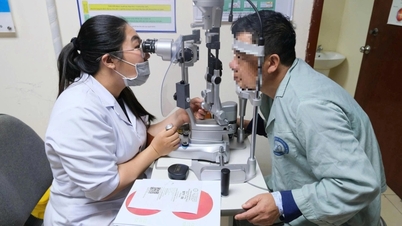





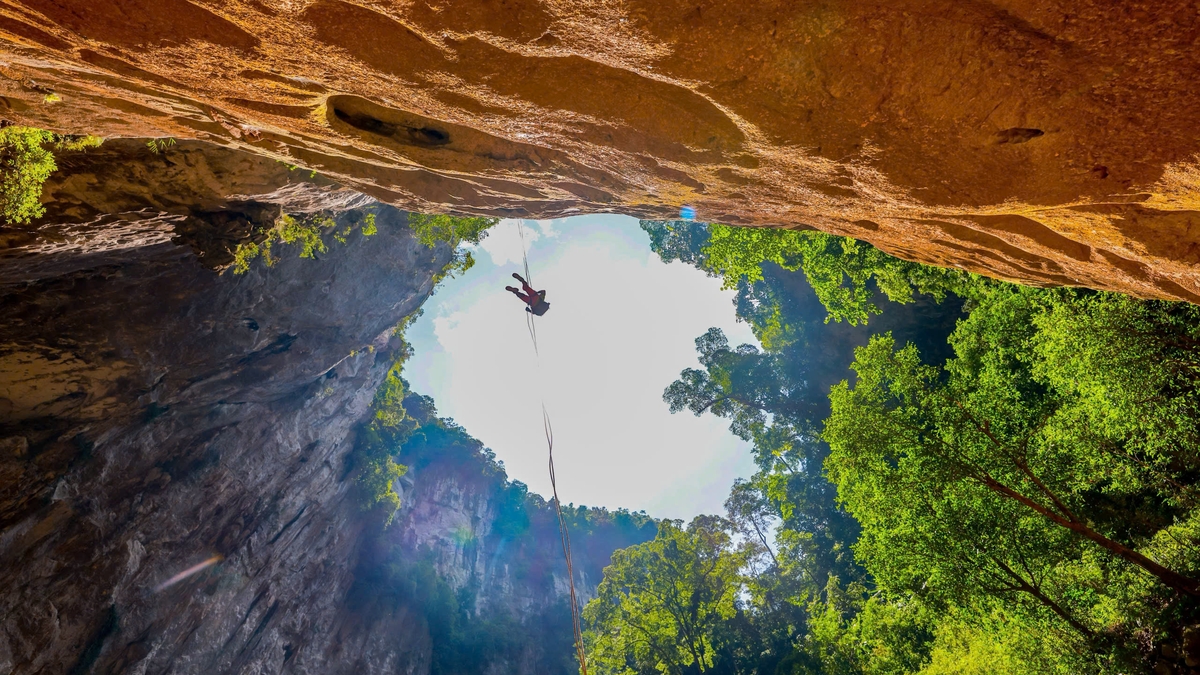
![[Photo] President Luong Cuong attends the 80th Anniversary of the Traditional Day of the Armed Forces of Military Region 3](https://vphoto.vietnam.vn/thumb/1200x675/vietnam/resource/IMAGE/2025/10/28/1761635584312_ndo_br_1-jpg.webp)


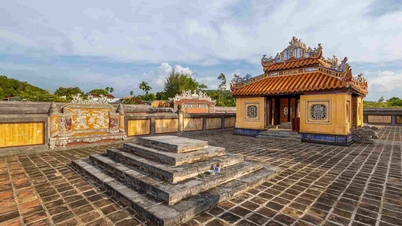









































































Comment (0)